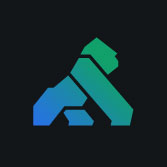Kong Gateway Enterprise 3.3.x.x EOL

As of May 2024, Kong Gateway Enterprise 3.3.x.x will enter its End Of Life (EOL) phase and will no longer be a part of the full support cycle. Following this, Kong Gateway Enterprise 3.3.x.x will enter a 12-month sunset support period, exclusively f
Leap Forward with Kong Gateway Enterprise 3.6

We're thrilled to announce the general availability of Kong Gateway Enterprise 3.6. This version brings security, efficiency, and standards conformance to enterprise applications. Plus, Kong AI Gateway , which you can learn more about here . Let’s
Kong Gateway Enterprise 3.2.x.x EOL

As of February 2024, Kong Gateway Enterprise 3.2.x.x will enter its End Of Life (EOL) phase and out of the full support cycle. Following this, Kong Gateway Enterprise 3.2.x.x will enter a 12-month sunset support period, exclusively focused on helpin
Kong Gateway Enterprise and Amazon EKS Anywhere Bare Metal

Power up application modernization and migration using Kong Gateway Enterprise and Amazon EKS Anywhere Bare Metal One of the most critical requirements for an Application Modernization project is to support workloads running on multiple platforms. I
Protecting Australian Consumer Data Rights (CDR) with Kong Gateway

This post highlights how you could use Kong Gateway to implement a solution for the Australian Consumer Data Standards (CDS) , which is part of the Consumer Data Right legislation introduced by the Australian Government in November 2017. As det
Simplifying PCI Compliance With Kong Gateway

Razorpay is a payments processor that's required to comply with PCI guidelines . This article will explain how we developed a custom Lua plugin to simplify PCI compliance with Kong Gateway . PCI Compliance: A Quick Overview The Payment Card Ind
UnitedHealth Group Insures API Management With Kong Gateway

This article was written by Jeremy Justus and Ross Sbriscia, senior software engineers from UnitedHealth Group/Optum. As part of the UnitedHealth Group (UHG), Optum optimizes healthcare technology, and one of our important missions is to provide the



